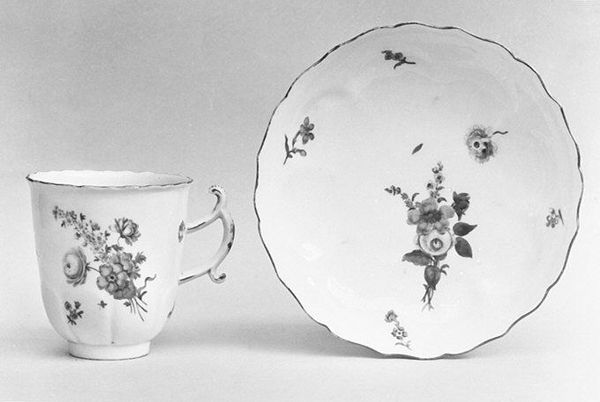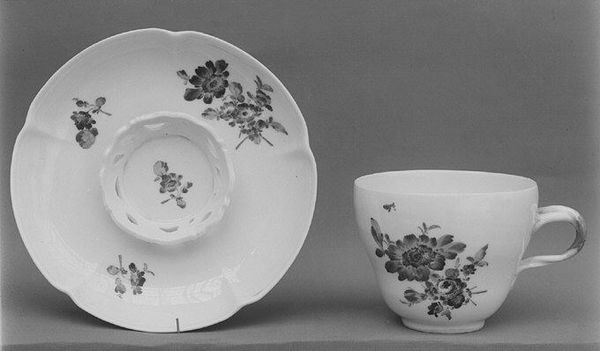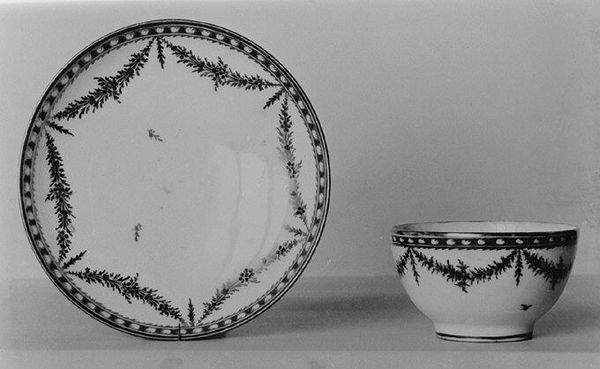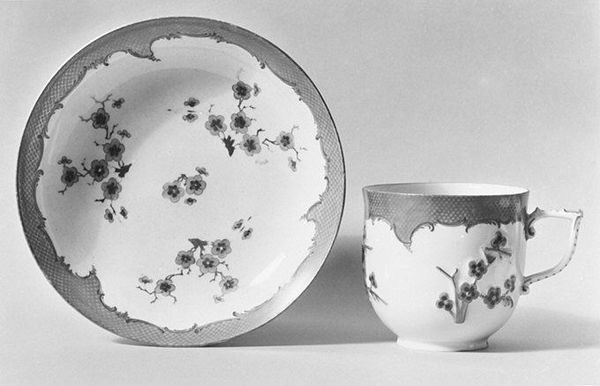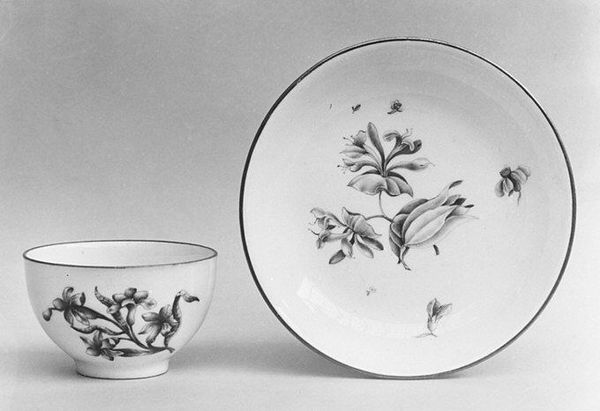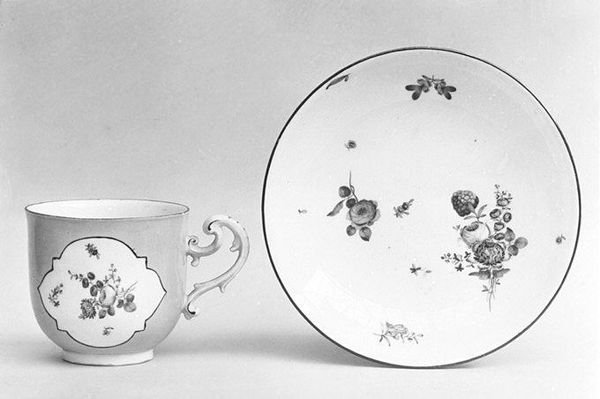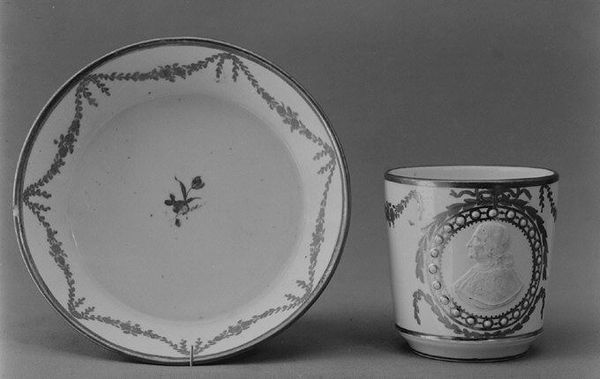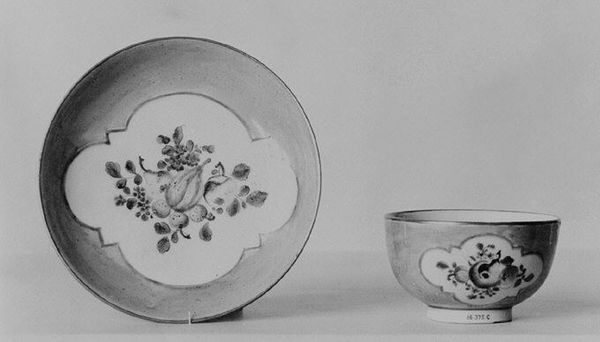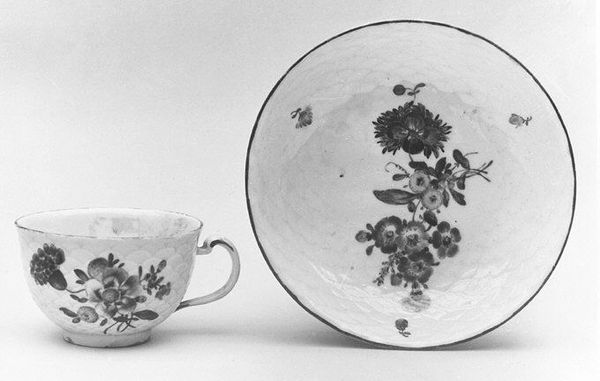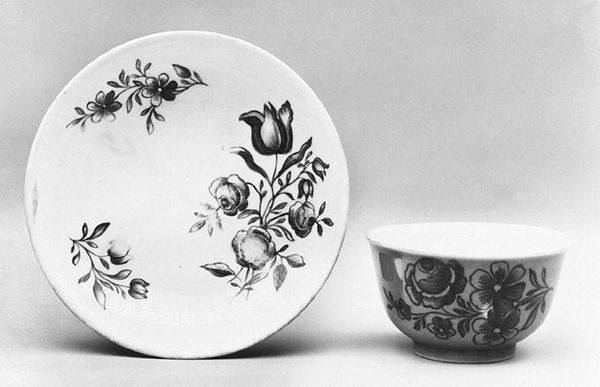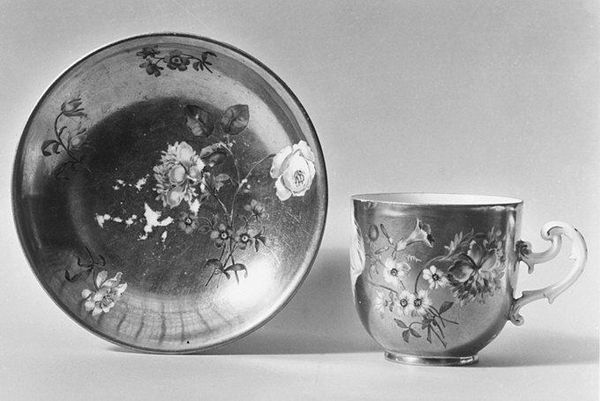
ceramic, porcelain, sculpture
#
ceramic
#
porcelain
#
sculpture
#
decorative-art
Dimensions: Height: 2 1/2 in. (6.4 cm)
Copyright: Public Domain
Editor: So, this porcelain cup, crafted around 1770-1780 by the Chantilly factory, exudes such delicate refinement. The painted sprigs of flowers dance across its surface, it seems both elegant and everyday. What narratives do you see emerging from this object? Curator: This "everyday" elegance is precisely where its power resides. Porcelain, in the 18th century, wasn’t simply a material, but a potent signifier of social class and global trade. This cup, made during a period of intense colonial expansion, would have held commodities – tea, coffee, sugar – produced through forced labor. Do you see how those delicate floral patterns become complicated by this history? Editor: Absolutely. The cup itself becomes a symbol of consumption and privilege, even though the decoration feels quite innocent. Is the act of drinking from a piece like this then a participation in that historical context? Curator: In a way, yes. But it also opens up questions of agency and resistance. Who owned this cup? A wealthy aristocrat, certainly, but perhaps also someone lower down the social scale aspiring to that status. How might their relationship to it differ? And what about the makers? The porcelain industry in Europe was built by stealing technology from China and exploiting labor. The object, seemingly simple, encapsulates a complex web of power dynamics. Does that change your initial feeling of refinement? Editor: It does, it makes me consider the global systems at play, and the way something so seemingly small can hold such weight. It moves beyond pure aesthetics and demands critical engagement. Curator: Precisely! Seeing beyond the surface beauty allows us to confront the uncomfortable truths embedded within objects. This approach is what can reveal the complete history and power within this beautiful porcelain. Editor: Thanks, it does give me new food for thought regarding design in this period and its global context.
Comments
No comments
Be the first to comment and join the conversation on the ultimate creative platform.
